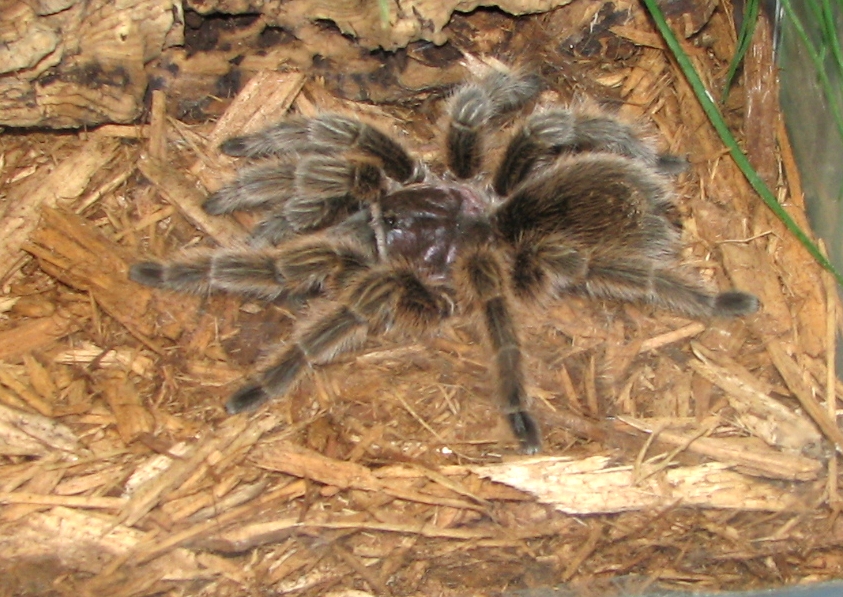How to Care For and Feed Rose Hair Tarantulas
19th Dec 2014

Although many people are squeamish when it comes to spiders, many of them actually make good pets. One example of this is the rose haired tarantula. They are native to the desert regions of Chile but make great pets in the U.S. because they are rather small, so they don’t need a lot of space, and they require little maintenance. Even though rose haired tarantulas are low- maintenance creatures, people who choose to keep them as pets do need to know how to care for and feed them properly. Following these guidelines will help these pet owners assure themselves that their tarantulas remain healthy and thrive.
Handling a rose hair tarantula
Although they are docile creatures, their bite is painful and may be venomous if you’re allergic. So, this should be a pet that is observed rather than handled. When it is necessary to handle the creature, it is essential the pet owner wear protective gloves and eyewear. When lifting a rose hair, be sure to cup it gently into your hands with its legs folded under its body. Be extremely careful to not drop a rose hair, as a fall of even a few inches can cause irreparable damage to its exoskeleton.
Housing
A single rose hair tarantula can live comfortably in a 10-gallon tank that should be wider than it is tall. Also, these tarantulas are loners. No other living creature should share the tank with it because they have a tendency to be aggressive, particularly with other rose hairs. Rose hairs like to climb, so provide some artificial vines or plants for it. Also, cover the bottom of the tank with two inches of substrate so the tarantula can burrow. The substrate can consist of sterilized potting soil, sphagnum moss, orchid bark, coconut fiber, or commercial reptile bark. Always avoid using aromatic woods as substrates. The substrate must be kept moist but not too wet and it should be changed daily to prevent bacteria growth. It is also a good idea to provide the tarantula with a hiding place such as a hollow log or cork bark.
Temperature
Rose hairs need to live in temperatures that range between 75 and 83 degrees Fahrenheit. In order to assure the terrarium remains at the ideal heat, use an under-tank heat pad at one end of it. It is important to not overheat the tank, so be sure to place a thermometer two inches over the surface in the middle of the tank and monitor it closely.
Lighting
Rose hairs need to be exposed to light about eight hours a day. Use a low-wattage artificial light to provide the right amount of exposure daily. Be sure to use a timer to avoid overexposure. Rose hairs need to have consistency in their light exposure, so be sure to use a timer so the tarantula gets the light exposure at the same time each day.
Water and humidity
The humidity level of the tank is important. Humidity levels below 60% are dangerous for rose hairs so the humidity should always be kept between 60-70%. Be sure to use a hygrometer in the tank for easy measuring of humidity levels. Rose hairs drink water through their fangs. In order to provide them the proper amount of water, provide a water bowl about the same size as the creature and fill it with no more than one half inch of water and some cotton. The tarantula will drink by climbing onto the cotton and sipping through its fangs.
Feeding
The main source of nutrition for a rose hair tarantula is gut-loaded crickets. Dubia Roaches are a good choice to use. Grasshoppers and locusts are other good choices. A good amount to feed rose hairs is 3-6 appropriately sized crickets two times per week. It is important that the crickets are “gut-loaded” because they provide valuable nutrition to the tarantulas. By eating gut-loaded crickets, rose hairs will be able to absorb the nutrients they need to thrive and be vital. When they are in their natural habitat, rose hairs will go through periods of overfeeding in preparation for an upcoming famine. Captive rose hairs may do the same thing, so there is no need to worry if their feeding ever seems “off” or not normal. However it is important to remove uneaten prey from the tank after a one-day period to avoid decay, mold, and fungus from developing. There is no need to worry about overfeeding a rose hair tarantula because they will stop eating after their hunger has been satisfied. However, it is important to pay attention to the belly of a pet rose hair. If the abdomen becomes shriveled, it is a sign of under-eating and dehydration so food and water need to be administered to it immediately.



